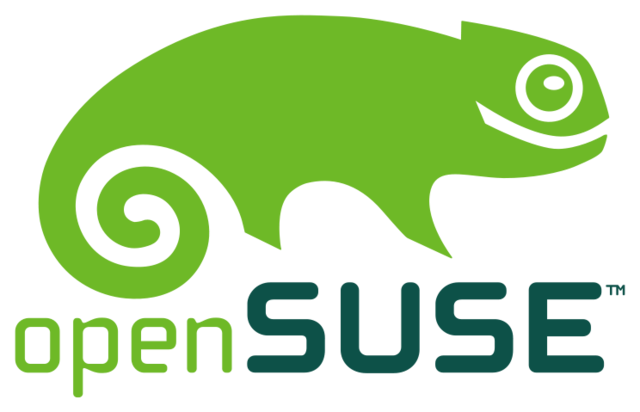Migrating from Fedora to openSUSE part3
17 de Novembro de 2010, 0:00 - sem comentários aindaMigrating to Fedora OpenSuse part3
The video codecs are available through the gstreamer packages available in the distro. The same happens with the flash that owns the package (flash player). There are available two versions of Java: The sun version ( java-1_6_0-sun and java-1_6_0-sun-plugin ) and the openjdk version ( java-1_6_0-openjdk and java-1_6_0-openjdk-plugin ). Choose your favorite one and install it. Install the package chromium to navigate through Google Chrome engine and acroread to use Adobe Reader 9.
At this point I do not see much difference between the distros Ubuntu and openSUSE and Fedora. All distros offer these programs through their own repositories or repositories developed by the community, in short, the only concern is to find the repository that has the desired package, which as seen in the previous chapter, is an advantage for openSUSE.
Soon, more news on the road.
Migrating from Fedora to openSUSE part 02
17 de Novembro de 2010, 0:00 - sem comentários aindaSeguindo nossa série de artigos sobre como migrar de um ambiente Fedora para o openSUSE, hoje será apresentado a YaST, como configurar seus repósitório, instalação de programas. compiz.
Em ingles, segue então a tradução livre do artigo Migrando de Fedora para openSUSE escrito pelo também Embaixador openSUSE Alexandre Moura - Rasta! - Xnd
Migrating from Fedora to openSUSE part2
2.1 YaST
2.1 Repositories
Configuration for extras Repositories on openSUSE is very cool. He already has a search service for community repositories so by the YaST2 you can add/remove repositories. You do not need to have any intervention by a single command line. For less experienced users, this is great.
Following is a list of repositories I added in my installation:
name=Repositório principal (NON-OSS)
baseurl=http://download.opensuse.org/distribution/11.3/repo/non-oss/
name=Repositório principal (OSS)
baseurl=http://download.opensuse.org/distribution/11.3/repo/oss/
name=Repositório principal (Contrib)
baseurl=http://download.opensuse.org/repositories/openSUSE:/11.3:/Contrib/standard/
name=Repositório principal de atualização
baseurl=http://download.opensuse.org/update/11.3/
name=Packman Repository
baseurl=http://ftp.uni-erlangen.de/pub/mirrors/packman/suse/11.3/
Installation Program
The Software Management Module for YaST is very similar to the Fedora Package-Manager, and for who already uses it will get no problems to operate YaST Software Management module. A small difference is due to the solver, a script responsible for resolving packages conflicts and dependency problems. It allows a better administration management for the System Administrator who can even ignore the problems and keep the environment inconsistent. I do not think this is good for less experienced users. For more advanced users, there are other ways to do this. In my opinion point to Fedora in this topic.
CompizFusion / Sax2
Unfortunately this version 11.3, the Sax2 was left out. Sax2 configuration tool is a video, and I thought the differential openSUSE. Whenever I missed a tool like this in the other distros. Anyway, I had no problem with setting up video on my desktop. The hardware was detected and did not need to configure anything, just as it was with Fedora and Ubuntu. As for CompizFusion the openSUSE comes with a configuration module for Desktop Effects with some more features than Fedora and Ubuntu. But is less complete than the compizconfig-settings. Anyway, I liked this compiz setup tool, which is already integrated into the system, no need to install additional packages to set up some extra effects. Advantage for openSUSE.
At the end of this article, as a desktop I evaluate the openSUSE as a very good desktop, with some advantages compared to Ubuntu and Fedora, and some others, so let the three at the same level. In the next article we will talk about installing codecs and plugins (Java, Flash and videos) Google Chromium and Adobe Reader.
Tradução Livre
CarlosRibeiro
Migrating from Fedora to openSUSE part 01
31 de Outubro de 2010, 0:00 - Um comentárioGeekos, as eleições terminaram e a vida continua meu amigo.
Dentre algumas coisas interessantes que aconteceram durante o domingo de eleições a mais inusitada e a que vou relatar foi um pedido de grego, isto mesmo, você não leu errado e nem esta cansado ainda.
Pois bem, logo que cheguei do local de votação pensei comigo, ganhe o Serra ou ganhe a Dilma, minha parte vou fazer e vou começar agora, então nada melhor do que ajudar meus amigos geekos, trabalhar nos preparativos finas para a latinoware junto com a Izabel e o Sílvio, ou seja, fazer a minha parte, então me conectei no nosso canal opensuse-pt para ver qual era a "boa do dia" e em paralelo comecei a abrir meus emails na qual encontrei o que seria a maior surpresa deste importante dia de eleição presidencial.
A surpresa era uma mensage de um Embaixador openSUSE Grego chamado Kostas Koudaras, perguntando se alguém poderia ajudar na tradução do idioma português para o inglês do artigo Migrando de Fedora para openSUSE de autoria do também Embaixador openSUSE, Alexandre Moura - Rasta! - Xnd
Segue então a tradução livre do Português para o Inglês do artigo Migrando de Fedora para openSUSE.
Espero que este material ajude muita gente ou pelo menos os gregos :)
Como eu disse então no início, que vença o candidado que tiver o maior número de candidatos e mãos a obra para juntos fazermos deste país lugar melhor para todos sendo que para isto eu utilizo o openSUSE como ferramenta, e você?
Segue o artigo - em inglês
Boa leitura,
Abraços
CarlosRibeiro
Migrating from Fedora to openSUSE part 01
I've got some time reviewing the progress of openSUSE, but now I decided to install and use this great distro, and begin to report my own experience in a series of articles about migrating from Fedora to openSUSE.
Initially I must say I hate this update model adopted by the distro in that it downloads and installs every package. In most other distros, they first download all packages and then install them. The risks of generating trouble in the system are much lower this way. But there is a simple way to solve this problem:
As root, edit /etc/zypp/zypp.conf file
Find the line with the value "commit.downloadMode"
Uncomment and change its value to "DownloadInAdvance", where the line should look like this:
commit.downloadMode = DownloadInAdvance
Thus, during the upgrade or install packages, first you will download all the files, then start to installing them.
I will stop here, for today
more reports soon.
Posted by Rast!
Translated by CarlosRibeiro
Original Version Portuguese
Carlos Ribeiro Mini CV
22 de Outubro de 2010, 0:00 - sem comentários ainda Atuando profissionalmente com plataforma Linux desde 1998, optei pela distribuição S.U.S.E desde seus primórdios, devido a visão e objetivo da distribuição em ser não apenas, a melhor e mais bem documentada, a bela e bem definida estrategia ser a melhor distribuição Linux com o auxilio do YaST como grande diferencial. Entre experiencias nacionais e internacionais, tenho como experiencia profissional ter trabalhado em empresas como AT&M Technology, Telsinc - The Professional Services, Cisco do Brasil, H&R BLOCK - U.S.A, Ace Store - U.S.A, Novell, Komputer Linux, sempre trabalhando com suse linux, o que me levou a participar e palestrar em eventos como LinuxWorld, FISL, ENSOL, IBM CIO Meeting, Novell Sales Kickoff (Paris e Orlando), Conisli, Volday...
Devido a experiencia corporativa vivida em ambiente e tecnologia dentro do setor publico e privado adicionado a constante presença e envolvimento junto a comunidade openSUSE, atualmente trabalho como embaixador openSUSE e mantenho atividades do programa de embaixadores, marketing e estrategia para o projeto openSUSE no Brasil.
Acreditei e continuo acreditando que a melhor forma de vivermos eh vivermos de forma colaborativa, ajudando uns aos outros a construírem um mundo melhor e para isto me utilizo da plataforma suse Linux como ferramenta principal para mudar o mundo, e você?
Carlos Ribeiro, Open Platform Technical Sales Specialist, Brazil
+ 55 11 62066066
Email : carlosalberto.net@gmail.com
- IRC: CarlosRibeiro
- Company: Komputer Linux
- Blog: softwarelivre.org/usesuse/blog (Portuguese)
- Twitter: @CarlosR1beiro
- Facebook: Carlos.Ribeiro
- MSN: carlosalberto_net@hotmail.com
Uma mão a quem sempre nos ajudou!
5 de Outubro de 2010, 0:00 - sem comentários aindaPois eh, infelizmente este post nao sera referente a nenhuma dica do openSUSE, nao esta relacionado com o programa de embaixadores do openSUSE, nem a sobre nenhuma atividade do openSUSE em especifico, mas sim sobre o incidente ocorrido com o Bryen Yuko Yunashko tambem conhecido como suseROCKS, durante o ultimo final de semana.
Bryen foi furtado com algumas perdas consideraveis durante sua turne de apresentacoes na europa. Bryen tem dedicado a maior parte da vida dele trabalhando com projetos de acessibilidade na tecnologia, e com o advento do ocorrido, ele nao apenas perdeu valiosas informacoes com tambem as ferramentas que ele utiliza no dia a dia para aprimorar sua qualidade de vida apesar de sua deficiência.
Entao o Stephen Shaw criou uma campanha de ajuda para ajudar a cobrir as perdas materiais do Bryen, sendo assim, se algum embaixador openSUSE, entusiastas do sistema operacional do camaleao ou mesmo empresarios que utilizam ou ja utilizaram o openSUSE em sua infra-estrutura, se quiserem de alguma forma retribuir de alguma forma ao Bryen por tudo que ele ja fez pelo projeto openSUSE e o pelo projeto GNOME a11y, a oportunidade eh agora, click aqui
A historia completa pode ser lida no blog do proprio Bryen
Abracos
Boas e generosas doacoes
CarlosRibeiro


